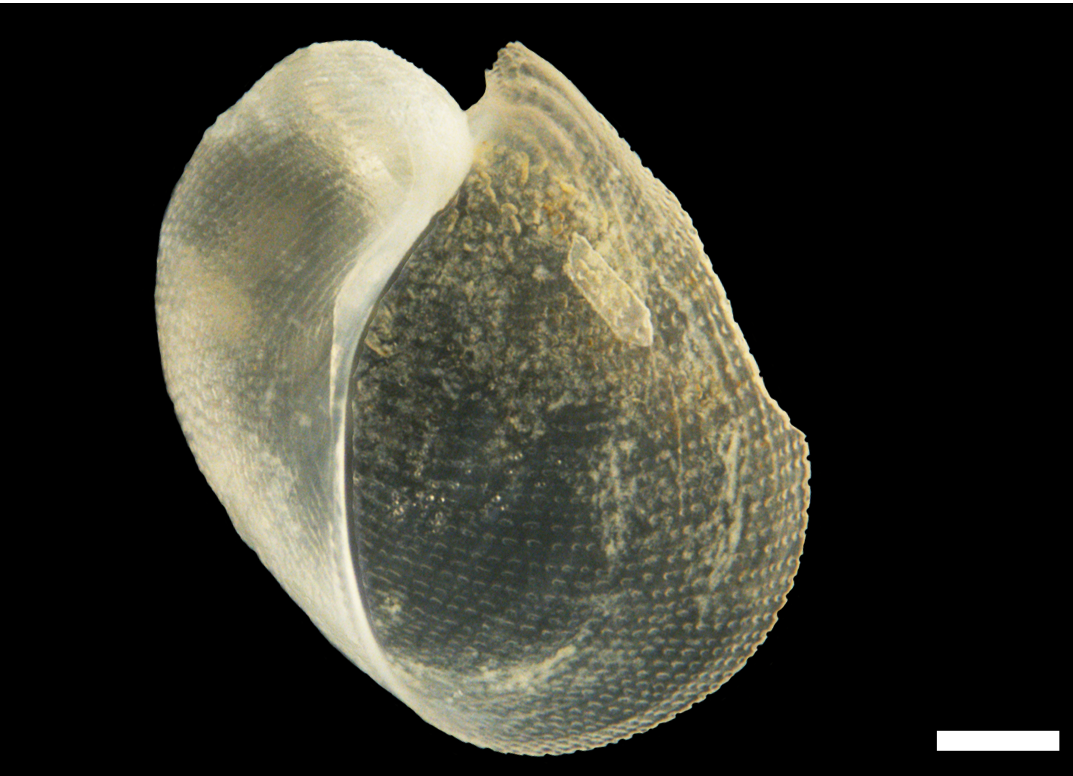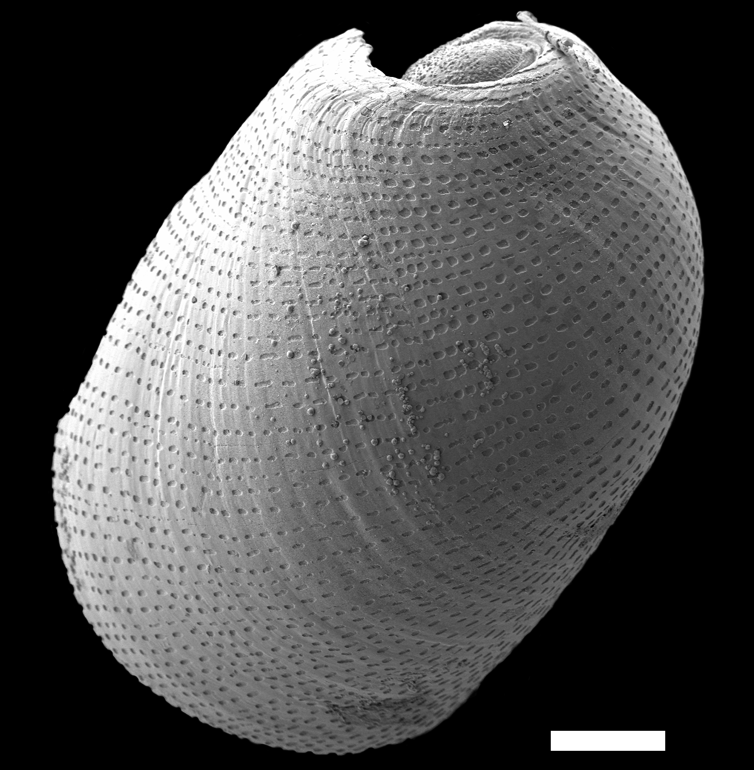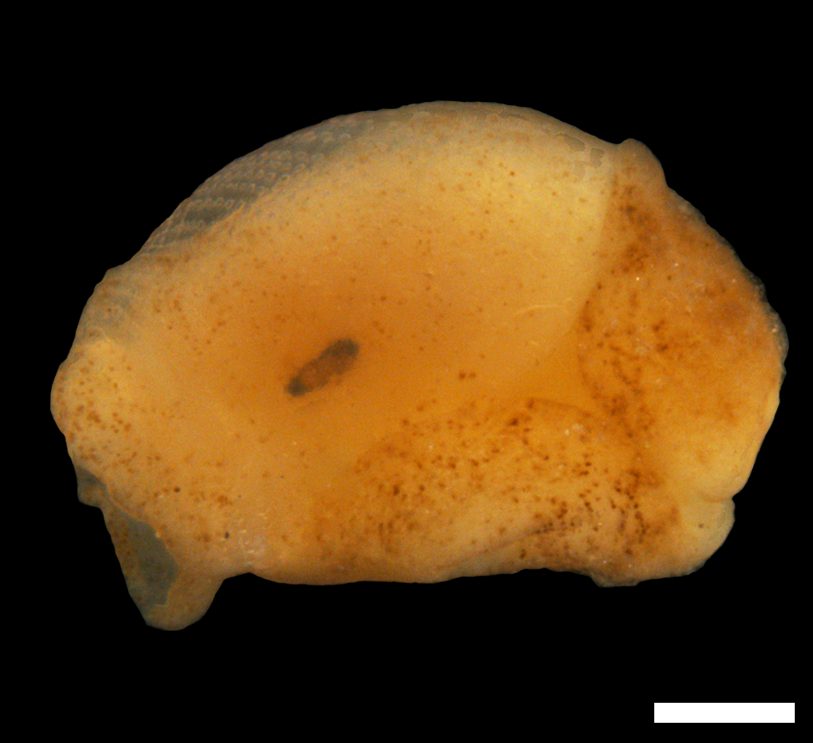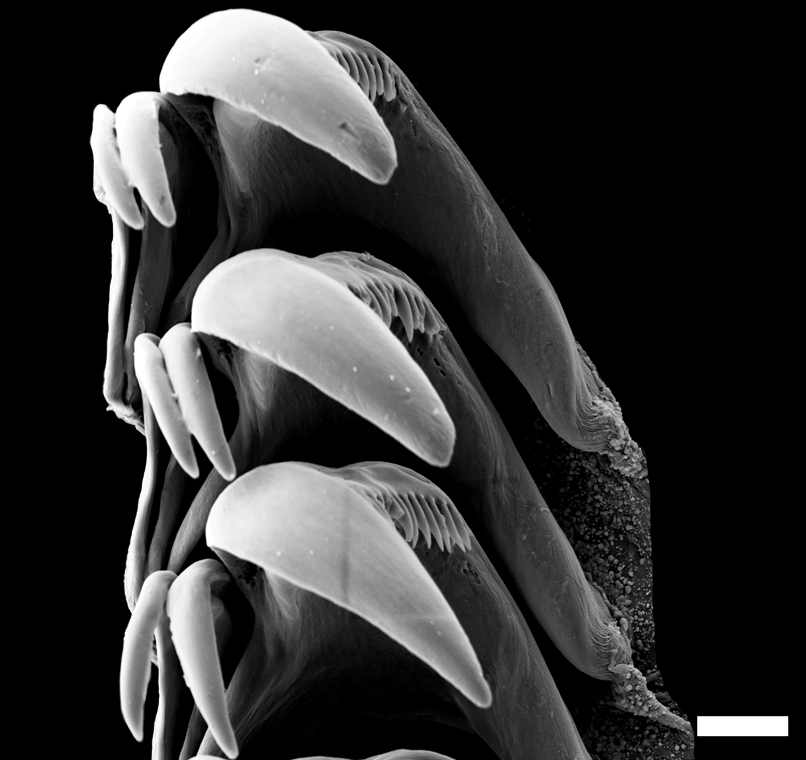Philine punctata
Shell description
The thin shell is internal and whitish to transparent in colour. The shell is squarish-oval in shape when viewed from above. The opening is wide and the edge is slightly wavy (scalloped). The top of the shell (apex) is blunted and slightly sunken into the shell. The shell is slightly umbilicated. The shell surface is covered by a pattern consisting of unconnected pits forming dotted lines. The size of the shell varies between 1.1–2.8 mm. This species is similar in anatomy to Philine angulata, which differs from this species in having a shell sculpture not exclusively of dots, but most often forming chains, a more angular shell and an unumbilicated shell.
Animal description
Ethanol preserved animals are yellowish in colour with small brown dots, but the rare live animal is mottled brown to black in life http://www.conchsoc.org/spAccount/philine-punctata. The pattern of the shell is visible through the thin tissue covering the shell (mantle), and the head shield is pointed, with no middle grove. The larval kidney is visible trough the shell.
Anatomy
The radula consists of 16 rows of teeth with two outer lateral teeth and one inner lateral tooth on each side. The central (rachidian) tooth is absent. The outer lateral teeth are curved with rounded tips and a broad base. The inner lateral teeth are curved with flattened tips and a broad base, the inner edge bears denticulations. The gizzard is rounded and not surrounded by muscle fibers. The gizzard plates are brown and kidney-bean shaped. They consist of two larger identical plates and one smaller with a tip on the surface. The male reproductive system consists of a flat tube with no obvious separation between the prostate and penis chamber.
Ecology
Occurs on soft bottoms, sand, shell sand, rocks, slag, and gravel between 6 and 240 m depth. It can be found associated with red algae.
Geographical distribution
Found around Greenland, the Faeroes, Shetland islands, Norway southwards from Nordland county (66°16′N), the British Isles, Baltic Sea, and the Mediterranean.
References
Ohnheiser LT og Malaquias MAE (2013). Systematic revision of the gastropod family Philinidae (Mollusca: Cephalaspidea) in the northeast Atlantic Ocean with emphasis on the Scandinavian peninsula. Zoological Journal of the Linnean Society 167(2): 273-326. DOI: 10.1111/zoj.12000.








